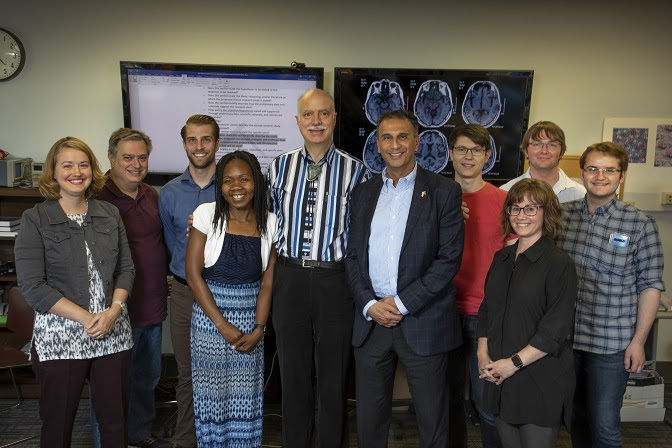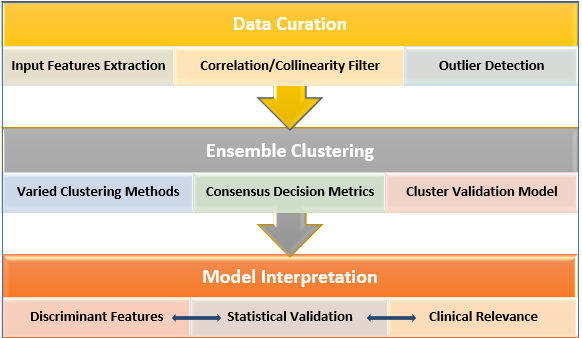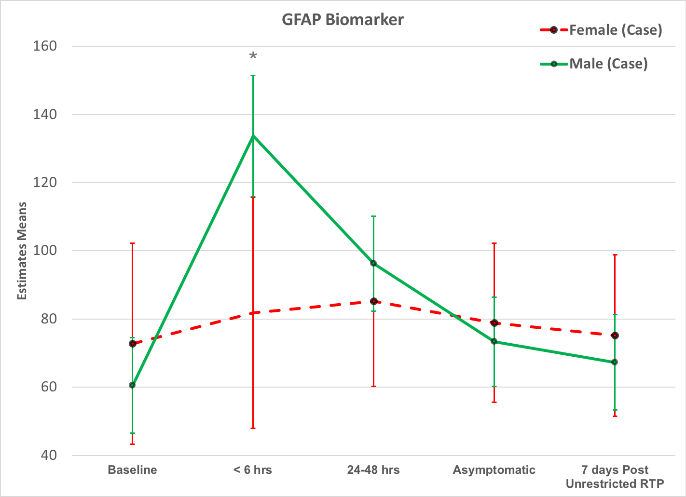Mild Traumatic Brain Injury Statistical and Unsupervised Learning Analysis
Introduction
The CLS lab, in collaboration with the Applied Computational Intelligence Laboratory (ACIL) at Missouri S&T, has been funded by the US Army Research Laboratory through the Leonard Wood Institute (LWI), to utilize a variety of approaches to address the very challenging problem of mild traumatic brain injury. We combine mathematics, statistics, biology, and machine learning (ML) employing the multidisciplinary skills of the team members.

Some members of the TBI Interdisciplinary Team July 2019
An Explainable and Statistically Validated Ensemble Clustering Model for Identification of TBI Subgroups.
We present a methodology to identify patient injury severity subgroups and key phenotypes that delineate these subgroups using varied clinical and computed tomography data. In our case, this procedure yielded six distinct patient subgroups with respect to mechanism of injury, severity of presentation, anatomy, psychometric, and functional outcome. The ensemble cluster analysis framework, as illustrated in the figure below, fully integrates statistical methods at several stages of analysis to enhance the quality and the explainability of results. The methodology is applicable to other clinical data sets that exhibit significant heterogeneity as well as other diverse data science applications in biomedicine and elsewhere.

Figure 1: Explainable and statistically validated ensemble clustering model.
Analysis of Concussion Recovery Trajectories using Multi-modal Assessments and Serum Biomarkers
To enable better mTBI outcome prediction, an initial step is to analyze the trajectory of recovery metrics over time. One of our project goals is to develop an mTBI recovery timeline model. Thus, this study provides an assessment of recovery trajectories of mTBI while incorporating heterogeneity of individual responses. We analyze the trajectories over multiple discrete time points from baseline to 6 months post injury using a combination of neurocognitive and postural stability assessments and serum biomarkers. The data, obtained from FITBIR, consists of concussed subjects and a matched control group, to allow for comparison in prognostic assessment. Physicians use the collective information gained from a set of clinical tests to diagnose a concussion. Commonly used clinical tests include the Immediate Post-Concussion Assessment and Cognitive Test (ImPACT), Standardized Assessment of Concussion (SAC), Balance Error Scoring System (BESS), Vestibular Ocular Motor Screening (VOMS), Computerized Neurocognitive Software (CNS) Vital Signs, and the Sports Concussion Assessment Tool (SCAT) symptom evaluation.
We analyze the recovery trajectories of individuals with mTBI (n=274) compared to a control group (n=182) on multi-modal assessment tools and blood biomarkers that have not yet been fully investigated. This includes trajectories of up to 7 time points on 4 biomarkers: glial fibrillary acid protein (GFAP), ubiquitin C-terminal hydrolase (UCH-L1), microtubule-associated proteins tau (MAPT), and neurofilament light polypeptide (NF-L) and 3 assessment tools (SAC, BESS, and ImPACT).
Given the heterogeneity of TBI, the use of serum biomarkers offers the potential to add new insight on the complexities of this injury process. The trajectories show that GFAP is significantly elevated in the case group at < 6 hrs post injury, but is not significantly different from control at later times (Fig. 2a). Men have a significantly higher mean GFAP level at 6 hrs than women (Fig. 2b). The outcome of this study was presented at the IEEE Engineering in Medicine and Biology Conference 2020*. It shows promise in better understanding the pattern of how different assessments and serum biomarkers change over time after mTBI. Due to missing data at different time points for both assessments and biomarkers, the generalizability of current findings is limited. Continued research efforts is focused on further understanding of how to utilize information from these multiple sources and adjust the modeling to account for different levels of heterogeneity.


Figure 2: GFAP Serum Biomarker Trajectories: Case vs. Control (right) & by Gender within case group only (left).
* Zachary Roy, Sujit Subhash, Lien Bui, Bassam Hadi, Daniel Hier, Donald Wunsch, Gayla Olbricht, Tayo Obafemi-Ajayi, “Exploratory Analysis of Concussion Recovery Trajectories using Multi-modal Assessments and Serum Biomarkers,” IEEE Engineering in Medicine and Biology Society Annual Conference (EMBC 2020), July 2020.